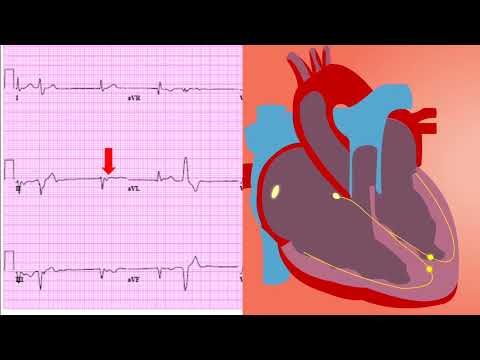🎬 Video Summary
This video provides a clear explanation of how antacids, specifically proton pump inhibitors (PPIs), work to reduce stomach acid production. It breaks down the process of acid production in the stomach and demonstrates how these medications effectively manage heartburn and acid reflux. This is valuable information for anyone seeking to understand how to alleviate digestive discomfort.
🧠Teaching Perls
- Understand the mechanism of action of proton pump inhibitors (PPIs).
- Learn how acid is produced in the stomach.
- Discover how antacids help to reduce symptoms of acid reflux and heartburn.
- Explore the relationship between antacids and stomach acid production.
- Gain a foundational understanding of digestive health and medication.
❓ Frequently Asked Questions
Q: What are proton pump inhibitors (PPIs) used for?
A: PPIs are primarily used to reduce stomach acid production, which helps treat conditions like heartburn, acid reflux, ulcers, and gastroesophageal reflux disease (GERD).
Q: How long does it take for antacids to work?
A: Antacids can provide quick relief from heartburn, usually within minutes. However, PPIs may take several days to reach their full effectiveness.
Q: Are there any side effects of taking antacids?
A: While generally safe, some antacids can cause side effects such as constipation, diarrhea, or nausea. Long-term use of PPIs has been linked to certain health risks, so it’s important to consult with a healthcare professional.
Q: Can I take antacids with other medications?
A: Some antacids can interfere with the absorption of other medications, so it’s essential to talk to your doctor or pharmacist before combining antacids with other drugs.
Q: How do proton pump inhibitors differ from other antacids?
A: PPIs work by directly inhibiting the proton pumps in the stomach lining, which are responsible for acid production. Other antacids, like calcium carbonate, neutralize existing stomach acid.
Q: When should I see a doctor for acid reflux?
A: If you experience frequent or severe heartburn, difficulty swallowing, or symptoms that persist despite using over-the-counter antacids, you should consult a doctor for further evaluation and treatment.
🧠 Key Takeaways
- 💡 Proton pump inhibitors (PPIs) effectively reduce stomach acid production.
- 💡 Understanding how stomach acid is produced helps in managing acid-related symptoms.
- 💡 Antacids can provide relief from heartburn and acid reflux.
- 💡 Long-term usage of antacids can have side effects, and consulting a doctor is advised.
- 💡 There are different types of antacids, including PPIs that target acid production.
🔍 SEO Keywords
Antacids, proton pump inhibitors, PPIs, stomach acid, acid reflux, heartburn, digestive health
“`

